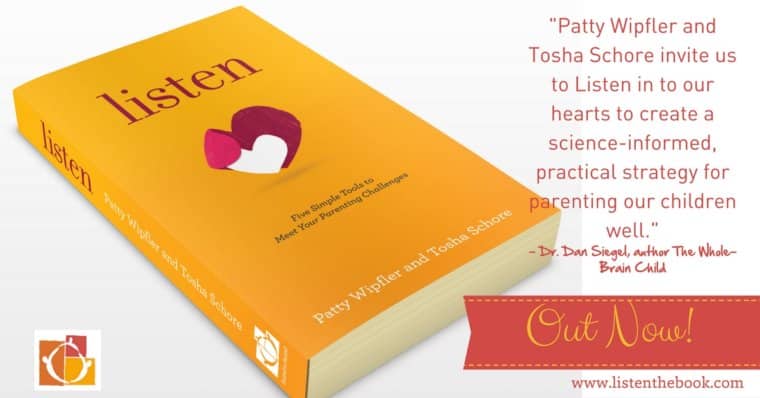![]()
I was chatting with a friend that has recently taken a Hand in Hand course of mine. She commented that since doing the course she feels like I am an extra voice in her head, and that i'm always in there, commenting on her parenting!
We laughed, but I recalled something like the same experience. I remembered how when I first started practicing more positive parenting methods I was surprised to hear a crazy amount of incessant inner chatter.

For most people parenting this way is a taught skill. We weren't raised this way nor did we know of others raised this way. This new parenting paradigm gets you asking questions and thinking hard, and in daily life can feel like a constant to-and-fro between your usual, default reactions and the newer tools you are acquiring.
It can sound something like this:
I walk out of the play room and leave my gems playing gorgeously, but when I come back, it looks like a hurricane has wiped the village!
My natural reaction is to start to RANT…But then I remember: No shaming, no blaming, no dictating.
I take a breath and run through my new options, and there are many:
Be playful, reconnect with them first.
My inner voice chatters: “You left the room who knows what happened” “Should you have been there?” “Is it such a big deal?”
The debate rages: “Won't they feel so much extra love if I just get down and clean for them? Or should I do it with them?” “Let's play! It's only mess, they're only kids.”
And escalates: “Why is this such a big deal for me? What are MY childhood memories of mess?” “What did my mum say?” “What am I am really feeling?”
Should I set a limit? Have I got it in me to support them through any big feelings that might erupt if I do set a limit?
Wah!
At other times, it goes more like this:
I'm at the park, exhausted!
The kids want me to play. I refuse I sit down and watch, secretly scrolling through my phone looking up from time to time.
The chatter starts:
“I deserve this break! Parenting is hard work! It was never meant to be done in isolation,” I tell myself.
“Oh, but I should go and play, they really love that and a few moments of play will really fill their cups!”
“What if someone sees me sitting here like this? How can I teach about connected parenting when I'm just sitting here?!”
“But I can role model taking breaks. The importance of stopping to recharge.”
Somedays the tools come easier, but my mind still searches for clues and solutions on whatever challenge we're facing:
I place the toast my daughter requested in front of her at the table. “I WANTED TRIANGLES, NOT SQUARES!” she says, outraged.
My usual reaction would have been annoyance, but today i'm not reactive. I look at her calmly, with love and say “I'm sorry honey, today you are having squares.”
She seems to accept this limit (yay!), and begins to eat, but already my mind is racing:
“Oh dear, I wonder what upset her?” “Is this some repressed memory waiting to be felt?” “Is it a feeling stirred up around not being given choices?” “Is she feeling powerless?” “How can I fill her cup today?” “Ok, move in close and offer comfort, but get ready for the 'emotional dump.'
Somedays, things seem to run so smoothly. The tools work just as I dreamed they would, like the day I wake my daughter extra early because she's been offloading a lot of “little” upsets lately and hasn't been sleeping well.
I know I really need to give her some extra connection to fill her up again. She smiles at me with tired eyes and arms wide open and I offer her my full attention.
We read books and snuggle and she starts to tell me how much she misses her dad when he is away for work, and so we decide to make him a book using photos we've taken. We'll write about our adventures when he is away, we decide.
And I find myself basking in the glow of how wonderful it is I have the tools and the information to help connect deeply with my daughter so she can share her feelings with me, and that we can work together through them.
We both sleep soundly that night, with happy hearts and rested minds.
For sure, the profound experiences you'll see using these tools will bring tremendous blessings to your family's life, but the barrage of new information and experiences as you take them up may also create so much inner chit-chat that, at times, you will not be sure who you are anymore!
One way to reduce this chatter is to use Hand in Hand's fifth listening tool – listening partnerships.
A listening partnership is an agreement between two parents to exchange equal time practising the ancient wisdom of deep listening, and it can totally transform and recharge your parenting.
You simply set a timer. One parent talks first while the other listens. The listener doesn't interrupt or offer advice, but they pay close, warm attention. They know, and they constantly think, “This Mumma is the real expert of her life, she is going to figure this out.”
You can watch this introduction video to learn more about it: One Basic Secret to Reduce Parenting Stress.
Sometimes the toughest part of this parenting approach is that there are no cookie-cutter “right or wrong” answers. The tools are there to be used and adapted by the people who know your family best – you! This sense of really being listened to acts like a vital support. It frees our minds and helps us to sort through all that crazy chat in our minds to really get to the heart of the matter, to what's really bothering us.
It allows us to access our feelings and solve our challenges, to heal from past hurts and laugh away our stresses. And, in having this partnership, we can feel not quite so alone on this journey.
As parents we will always have questions, we will always seeking solutions because we have chosen this way to love our families the best way we know how.
We spend so much time thinking about their well-being that we sometimes get bogged down and don't think about ours. Listening partnerships are a way to explore and gain comfort and to equip us in the face of another long, wonderful day on the frontline of Parenting!
Would you like to make setting limits easier, playful? Even fun? Get this free guide to setting limits and find out how

